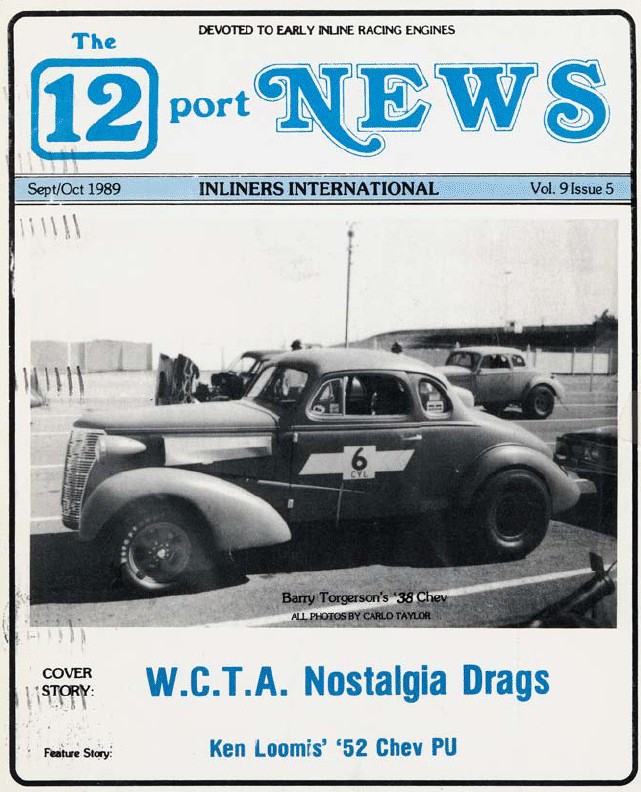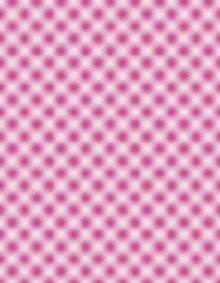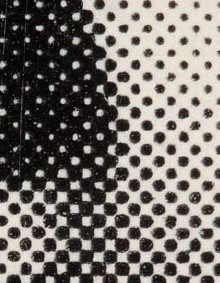- Relief printing
- Intaglio and planographic printing
- Color printing
- Bits and pieces
- Early photography in silver
- Non-silver processes
- Modern photography
- Color notes
- Color photography
- Photography in ink: relief and intaglio printing
- Photography in ink: planographic printing
- Digital processes
- Where do we go from here?
Photography in ink: planographic printing

Photo offset lithography. Carlo Taylor. Barry Torgerson’s ’38 Chevy from The 12 Port News magazine, September/October 1989. 1989. 8 x 6 1/4" (20.3 x 15.9 cm). The Museum of Modern Art, New York. Gift of Richard Benson © Inliners International, Inc. A single-color 100-line-screen black halftone with blue spot-color on coated paper. To reproduce photographs, offset uses the same halftone screen as letterpress.
The offset press has ended up with three cylinders, stacked one above the other. On top is the plate cylinder, around which is wrapped a thin aluminum plate holding the image in a polymer coating. Ink and water rollers ride on the plate, providing the ink/water balance necessary for the image to form on it. Beneath the plate cylinder is the blanket cylinder, which is wrapped in a cloth blanket with a thick, smooth rubber face. The ink from the plate transfers to this blanket with each revolution. Beneath the blanket runs the “back” cylinder, a polished steel cylinder with grippers to hold the paper, which bends around the cylinder as it is printed. All three cylinders are connected by a gear train so that they run in perfect synchrony.

A sixteen-times enlargement of a section of a magenta contact screen, similar to the one used to make the magazine cover illustrated on the previous page. These screens, made photographically from the older glass halftone screens, were colored magenta to allow contrast control in the reproduction by filtering the light used in the copy camera.
The introduction of the rubber blanket between plate and paper has six crucial effects, which we must list: (1) The blanket can “kiss” the paper relatively lightly, transferring ink without distorting the sheet. (2) The soft rubber can conform to, and print beautifully on, a rough-surfaced paper. (3) The blanket acts as a moisture barrier, keeping the water spread on the plate away from the paper, so that it does not swell and change size. (4) The paper—abrasive over time—never touches the delicate surface of the plate. (5) The image is reversed a second time, so that a right-reading, emulsion-down halftone negative, produced directly in a copy camera, prints correctly. 6. Small alterations to the size of the printed image can be made by changes in the underpacking of plate and blanket.

A section of the halftone enlarged the same amount to show the remarkable sharpness of the offset process. In use the screen is angled at forty-five degrees, which gives the least-apparent dot pattern to normal vision.
These mechanical advantages are coupled with a tremendous change in the halftone that was possible as soon as it was printed lithographically. The old relief plates that were used to print halftone-based reproductions could never hold a screen ruling finer than about 150 dots per linear inch, because of technical problems in etching, inking, and transfer. The new lithographic plates, holding images on a plane metal surface with no relief, can easily maintain a cleanly printing screen ruling of 300 dots per linear inch. Such a fine dot is nearly invisible to even the best naked eye, and completely invisible to anyone over forty years old. In offset printing the halftone finally drops out of sight, as ink is laid down in patterns so fine that we fully accept them as tonal.

